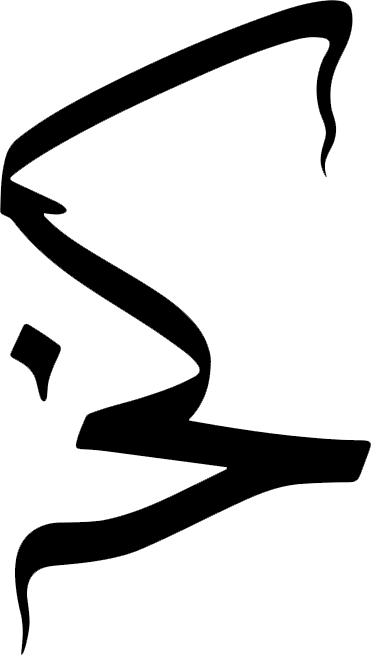Radical Imprint
The Visual Culture of Revolutionary Iran
by Sam Tafreshi
Ittihad-i javan was a tabloid magazine primarily targeted at the youth of Iran and ran from January to August of 1979.
The print and literary culture of any country is rarely free, rarely independent, and rarely given the opportunity to engage meaningfully with the problems of society. Only in the briefest and most radical of historical moments can the public revel in the emergence of thought unrestrained. From the fall of the Shah in February of 1979 until the imposition of new censorship measures in August, Iranians experienced one of these rare moments.
Tehran Musavvar (Tehran Illustrated) was a weekly magazine that focused on current affairs founded before the revolution and was banned in the summer of 1979. A shirtless Mohammad Reza Shah Pahlavi adorns the cover surrounded by images of former Prime Ministers and heads of SAVAK (secret police); text: “Arrest, execution: Who is in line?”
The fall of the Pahlavi regime was accompanied by the unshackling of the press and, overnight, Iran witnessed the establishment of dozens of newspapers, magazines, and intellectual journals run by the likes of communists, Islamists, and formerly imprisoned journalists. New publications were born, long-banned newspapers revived, and Pahlavi-controlled news outlets were closed down or transformed by their new editors.
Comics depicted revolutionaries kicking out the British and Americans, intellectuals debated the direction of the revolution, communiques, and manifestos were issued, and political satires critiqued leaders and traitors to the revolution alike. These were the pages that fluttered through the streets of Tehran in 1979.
This moment, however, did not last long. With the summer of 1979 came the curtailing of the press and a wave of bans was issued by the Islamic Republic in August. The next few years saw this trend continue, as the once diverse array of public discourse was gradually consolidated into a dominant narrative.
Leftist or Islamist, tabloid or journal, all fell prey to the re-emergence of censorship. But in that period between the end of the old regime and the establishment of the new republic, there is a palpable excitement that’s still visible peering out from the publications themselves. In that spring, between February and August, everything that could not even be whispered could suddenly be yelled and printed and illustrated.
Radical in its content, striking in its aesthetics, and representative of the vast and shifting landscape of revolutionary thought, this was the print culture of Iran at the moment of liberation. Digitised and made available online for the first time by the University of Manchester as part of the Nashriyah: Digital Iranian History project.
Farda-yi Iran was an intellectual journal loosely aligned with the Tudeh Party that ran from 1979 until 1982 with a focus on intellectuals linked to the Tudeh Party. Picture on the cover is renowned musician Mohammad-Reza Lotfi, known for his mastery of the tar and setar.
Shura-yi Nivisandagan va Honarmandan-i Iran was a publication run by a group of poets, artists, and intellectuals who left the larger Kanun-i Nivisandagan-i Iran. The publication was disbanded after the banning of the Tudeh Party in 1983.
Ahangar was a left-wing satirical publication that ran in the Spring and Summer of 1979 and attempted to revive Chalangar, a journal associated with the Tudeh Party in 1953. The top panel depicts Constitutional revolutionaries of 1905-1911 kicking out the Qajar Shah, the British and the Russans as America watches eagerly from the window; the middle panel shows the leftists and Islamist revolutionaries of 1979 working together to kick out Mohammad Reza Shah Pahlavi and Uncle Sam, as the British watch eagerly from the window; the bottom panel reads “and today,” depicting the leftist and the Islamist revolutionaries fighting each other as the British, Americans, Israel, and the Shah cheer from the window.
Sepid va Siyah was a political tabloid that had been banned for years under the Shah and resumed publication in 1978 until the widespread ban of publications in August 1979.
Firdusi was a journal on literary, social, and political critique that was known for using the tabloid aesthetic. Firdusi re-emerged in late 1978 after years of suppression as the Shah’s security apparatus was collapsing and then the publication closed in the summer of 1979. Text: Unity, the necessity of revolution.
Ummat was a publication run by the Militant Muslims Movement, a religious national group, and focused on left-leaning content within a religious scope. The publication ceased following internal conflicts among supporters of the Islamic Republic in 1981. The image of Ayatollah Mahmoud Taleghani, a highly respected cleric imprisoned for years under the Pahlavis, is superimposed on the cover in honour of his death in 1979.
Piruzi was a magazine founded by a collective of long-time journalists who had left the Kayhan newspaper after pro-Khomeini supporters took over the newspaper in the spring of 1979. Text (center, top): “When will the universities open? An introduction to the characteristics and necessities of the Cultural Revolution”
Parkhash was a newspaper published in Tehran and Isfahan by a prominent supporter of overthrown Prime Minister Mohammad Mossadegh. The newspaper was founded in the early 50s and banned by the Pahlavi regime after the 1953 coup overthrew Mossadegh. The newspaper was revived by its editor-in-chief in 1979, almost 30 years later, only to be banned in August of the same year.
Rah-i Kargar or Worker’s Way was a Marxist publication with ties to the Tudeh Party that formed in 1979 and banned later the same year but still managed to publish several issues in exile. Text: National Council of Resistance and Left Alliance Policy.
Rah-i Mujahid was a periodical formed by an offshoot of the Mujahidin-i Khalq (Marxist-Islamist party) that was still allowed to publish after the banning of the party in 1981. Unlike most publications listed here, Rah-i Mujahid published through to the early 90s.













